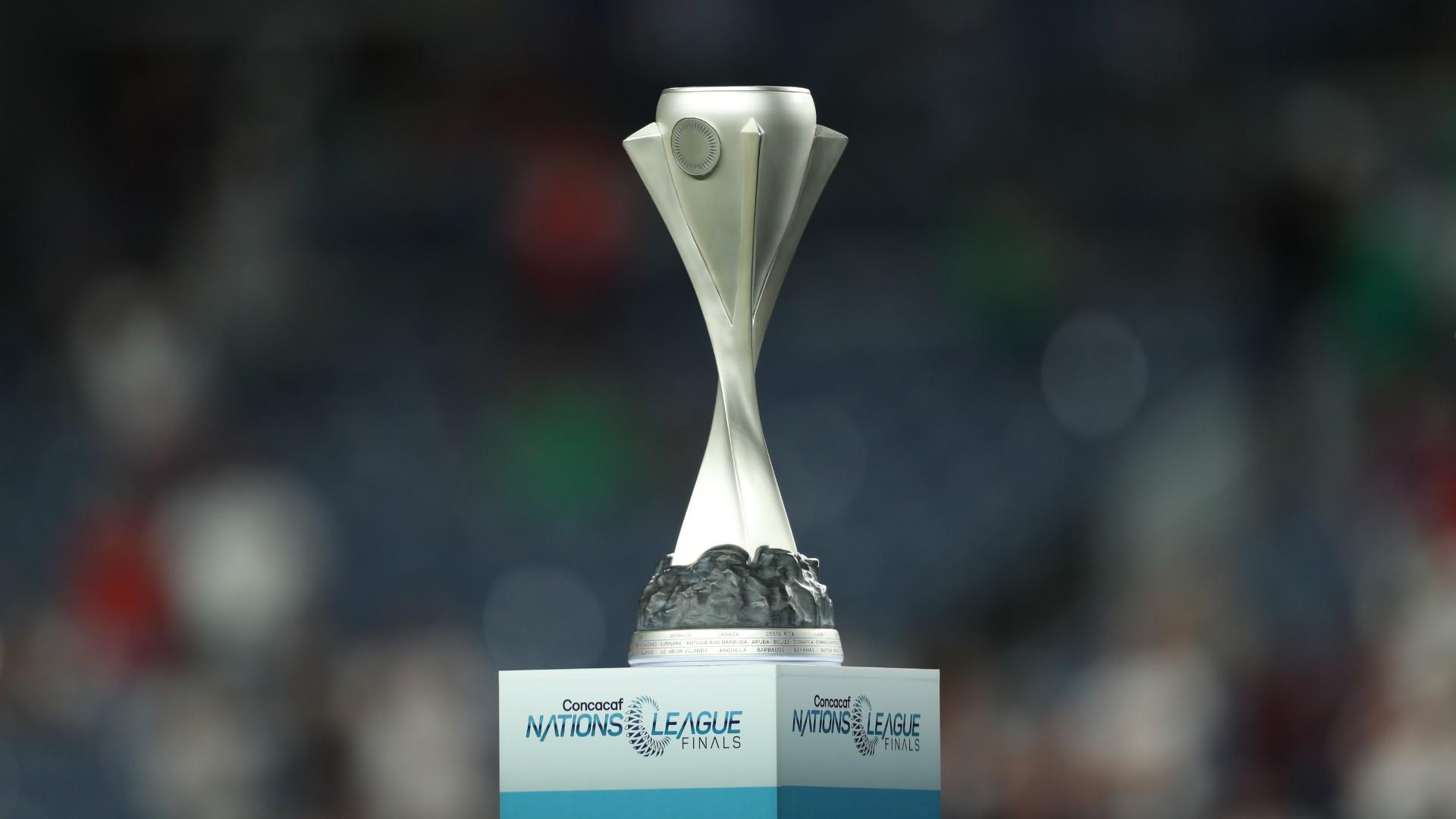
What is the Concacaf Nations League? It's a premier international football competition organized by the Confederation of North, Central America, and Caribbean Association Football (Concacaf). Launched in 2018, this tournament aims to provide a structured and competitive schedule for national teams in the region. All 41 member associations participate, divided into three tiers: League A, League B, and League C. The tournament features promotion and relegation, ensuring dynamic competition. It also serves as a qualifying track for the Concacaf Gold Cup. With its regular schedule, the Nations League has significantly increased the frequency and quality of competitive matches for teams across the region.
Key Takeaways:
- The CONCACAF Nations League is a premier football competition for North, Central America, and Caribbean teams, providing more meaningful matches and opportunities for smaller nations to shine.
- The tournament's format ensures competitive games, influences Gold Cup qualification, and contributes to the development of football in the region, with plans for expansion and continued growth.
What is the CONCACAF Nations League?
The CONCACAF Nations League is a premier international football competition organized by the Confederation of North, Central America, and Caribbean Association Football (CONCACAF). It was established to provide a more structured and competitive schedule for national teams in the region.
- Establishment: The CONCACAF Nations League was announced in November 2017 and officially launched in 2018.
- Purpose: The primary goal of the tournament is to increase the frequency and quality of competitive matches for CONCACAF member associations, ensuring that teams play more meaningful games.
- Participating Teams: All 41 member associations of CONCACAF participate in the tournament, divided into three tiers: League A, League B, and League C.
How is the League Structured?
The league is divided into three tiers, each with its own set of rules and formats. This structure ensures that teams of similar strength compete against each other.
- League Structure: The tournament is divided into three leagues with four groups each. League A consists of 12 teams, League B has 16 teams, and League C includes 13 teams.
- Qualification Process: Teams are placed in their respective leagues based on a qualifying tournament held from September 2018 to March 2019.
- League A Teams: The top six teams from the final round of qualifying for the 2018 FIFA World Cup and the top six finishers in the Nations League qualifying tournament make up League A.
- League B Teams: Teams that finished 7th to 22nd in the Nations League qualifying tournament are placed in League B.
- League C Teams: The remaining teams, including those from smaller Caribbean nations, are placed in League C.
How Does the Tournament Work?
Each league and group has its own format, ensuring a competitive environment for all teams involved.
- Group Format: Each group in all three leagues plays a double round-robin format, meaning each team plays every other team in their group twice.
- Promotion and Relegation: At the end of each season, group winners in Leagues B and C are promoted to the next tier, while the bottom teams in Leagues A and B are relegated to the next lower tier.
- Knockout Stage: The group winners of League A advance to a four-team knockout competition to determine the champion.
How Does the Nations League Affect the Gold Cup?
The Nations League plays a crucial role in determining which teams qualify for the CONCACAF Gold Cup, the region's premier tournament.
- Qualification for Gold Cup: The CONCACAF Nations League serves as a primary qualifying track for the CONCACAF Gold Cup. The top eight teams in League A, along with the group winners in League B, automatically qualify for the Gold Cup.
- Additional Qualification Process: Teams that do not qualify directly through the Nations League may still qualify through a further qualifying process involving playoffs between teams from different leagues.
- Gold Cup Qualification Rules: The top four teams in League A qualify directly for the Gold Cup, while the next best four teams from League A enter a qualifying tournament. The top four teams in League B also qualify directly, and the next best four enter a qualifying tournament. The top four teams in League C enter a qualifying tournament, with the top three teams from that tournament qualifying for the Gold Cup.
- Invited Guest: Qatar is an invited guest to participate in the Gold Cup, adding an extra team to the competition.
What Changes Were Made for the 2023-24 Edition?
The 2023-24 edition of the Nations League saw significant changes in its format to make the competition more exciting and inclusive.
- Format Changes: Starting from the 2023-24 edition, League A will increase to 16 teams, and League C will shrink to 9 teams. Relegation was cancelled for the 2022-23 edition due to these format changes.
- New Format Details: In the new format, the top four teams in League A will get a bye to the quarterfinals, while the remaining 12 teams will be split into two groups of six. The top two teams from each group will advance to the quarterfinals, where they will face one of the top four teams that got a bye.
- 2023-24 Edition: The bottom two teams in each group will be relegated to League B. League B remains unchanged with four groups of four teams playing a double round-robin format. Group winners in League B are promoted, and the last-place teams are relegated.
- League C Changes: League C will now have three groups of three teams. The group winners and the best second-best team will be promoted to League B.
Why Was the CONCACAF Nations League Created?
The creation of the Nations League addressed several issues faced by national teams in the region, particularly the lack of competitive matches.
- Historical Context: The CONCACAF Nations League was created to address the issue of national teams playing fewer than 10 games in a four-year period, which hindered their development.
- Regular Schedule: The tournament aims to provide a regular schedule of international fixtures, ensuring that teams play more competitive matches.
- Competitive Games: The introduction of the Nations League has led to an increase in competitive games for national teams, reducing the number of meaningless friendlies.
How Have Teams Performed in the Tournament?
The Nations League has seen various teams rise to the occasion, showcasing their skills and competing fiercely for the title.
- USMNT Participation: The United States Men's National Team (USMNT) participated in the inaugural tournament, playing in League A against teams like Canada and Cuba.
- USMNT Performance: The USMNT has been successful in the tournament, winning all three editions of the competition.
- Champions: The United States has been the most successful team in the CONCACAF Nations League, winning three titles.
- Runners-Up: Mexico has been the most consistent runner-up, finishing second in two editions of the tournament.
- Third Place: Teams like Canada, Honduras, and Jamaica have also had notable performances, finishing third in various editions.
- Fourth Place: Teams like Costa Rica and Panama have also had strong showings, finishing fourth in several editions.
Where Have the Matches Been Held?
The United States has been the primary host for the Nations League, with matches taking place in various cities across the country.
- Hosts: The tournament has been hosted by the United States for all three editions, with matches taking place in various cities across the country.
- Final Venues: The final matches of the tournament have been held at prominent venues such as Empower Field at Mile High in Denver, Colorado, Allegiant Stadium in Paradise, Nevada, and AT&T Stadium in Arlington, Texas.
What Are the Future Prospects for the Nations League?
The Nations League continues to evolve, with plans to expand and improve the competition in the coming years.
- 2024-25 Edition: The next edition of the tournament is scheduled to take place, with the format changes implemented from the previous season.
- Qualification for Copa America: The winners of the CONCACAF Nations League will qualify for the Copa America in 2024, adding another prestigious international competition to their schedule.
- Regional Impact: The tournament has a significant impact on regional football, providing a platform for teams from smaller nations to compete against stronger opponents.
- Development of Football: The increased number of competitive matches has contributed to the development of football in smaller nations, helping to grow the sport regionally.
- Revenue Generation: The CONCACAF Gold Cup generates a significant portion of CONCACAF's revenue, with the Nations League contributing to this financial stability.
- Flagship Competition: The CONCACAF Gold Cup remains the flagship competition of CONCACAF, but the Nations League has become an integral part of the regional football calendar.
How Does the Nations League Compare to Other Competitions?
The CONCACAF Nations League was inspired by similar competitions in other regions, particularly the UEFA Nations League.
- UEFA Influence: The CONCACAF Nations League was inspired by the UEFA Nations League, which was launched in 2018. Both competitions aim to increase the frequency and quality of international matches.
- Qualifying Tournament: The qualifying tournament for the Nations League took place from September 2018 to March 2019, helping to place teams in their respective leagues.
- Draw Ceremony: The draw ceremony for the 2019-20 Nations League took place on March 27, 2019, at The Chelsea Theater in Las Vegas.
What Have Been Some Memorable Moments?
The Nations League has provided fans with numerous memorable moments, from thrilling matches to standout performances.
- Group Stage Results: The group stage results from the inaugural tournament saw teams like Canada and the USMNT performing well, setting the stage for their future success.
- Knockout Stage Performances: The knockout stage performances have been impressive, with teams like Mexico and Honduras pushing for the title in various editions.
- Team Performances: The team performances have been diverse, with teams from different regions showing their strength and resilience throughout the tournament.
- Fan Engagement: The tournament has seen increased fan engagement, with more supporters attending matches and following the competition closely.
- Media Coverage: The tournament has received significant media coverage, with broadcasts and streaming available for fans across the region.
What Are the Benefits of the Nations League?
The Nations League has brought numerous benefits to the region, from financial stability to the development of football infrastructure.
- Sponsorship Deals: The tournament has attracted sponsorship deals, contributing to its financial stability and growth.
- Infrastructure Development: The hosting of the tournament has led to infrastructure development in various cities, with stadiums and facilities being upgraded to meet international standards.
- Youth Development: The increased focus on competitive matches has also led to improved youth development programs, as teams look to nurture young talent.
- Coaching and Training: The tournament has provided opportunities for coaches and trainers to gain experience and improve their skills, contributing to the overall development of football in the region.
- Regional Rivalries: The tournament has reignited regional rivalries, with teams from different countries competing fiercely for pride and bragging rights.
- Future Prospects: The CONCACAF Nations League has a bright future ahead, with plans to continue growing and improving the competition to meet the evolving needs of national teams in the region.
The Future of the CONCACAF Nations League
The CONCACAF Nations League has quickly become a key fixture in the international football calendar. Launched in 2018, it’s given teams in North, Central America, and the Caribbean more chances to play meaningful matches. With 41 member associations split into three leagues, the competition ensures regular, competitive games for all. The league's structure, with promotion and relegation, keeps the stakes high.
Changes coming in the 2023-24 edition, like expanding League A to 16 teams, promise even more excitement. The tournament also serves as a pathway to the CONCACAF Gold Cup and even the Copa America, adding extra layers of importance. By providing more competitive matches, the Nations League helps develop football in smaller nations and strengthens regional rivalries. As it grows, the CONCACAF Nations League will continue to play a crucial role in the region's football development.
Frequently Asked Questions
Was this page helpful?
Our commitment to delivering trustworthy and engaging content is at the heart of what we do. Each fact on our site is contributed by real users like you, bringing a wealth of diverse insights and information. To ensure the highest standards of accuracy and reliability, our dedicated editors meticulously review each submission. This process guarantees that the facts we share are not only fascinating but also credible. Trust in our commitment to quality and authenticity as you explore and learn with us.


